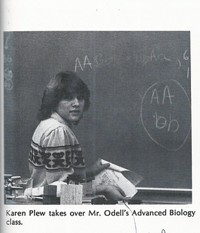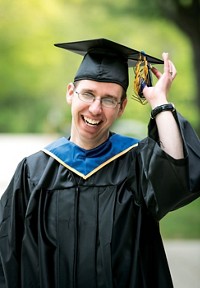Advertisement
Grab your lab coat. Let's get started
Welcome!
Welcome!
Create an account below to get 6 C&EN articles per month, receive newsletters and more - all free.
It seems this is your first time logging in online. Please enter the following information to continue.
As an ACS member you automatically get access to this site. All we need is few more details to create your reading experience.
Not you? Sign in with a different account.
Not you? Sign in with a different account.
ERROR 1
ERROR 1
ERROR 2
ERROR 2
ERROR 2
ERROR 2
ERROR 2
Password and Confirm password must match.
If you have an ACS member number, please enter it here so we can link this account to your membership. (optional)
ERROR 2
ACS values your privacy. By submitting your information, you are gaining access to C&EN and subscribing to our weekly newsletter. We use the information you provide to make your reading experience better, and we will never sell your data to third party members.
Careers
Community Launch Pads
Students find great value in low-cost, high-quality two-year colleges
by Faith Hayden
September 3, 2007
| A version of this story appeared in
Volume 85, Issue 36

If you've been a college-bound student in the past 20 years, you may have been on the receiving end of this threat: "Study hard and score high on those SATs, or you'll end up at a community college."

But students are no longer "ending up" at their local community colleges because they are out of options. Rather, they are deliberately choosing that path for a variety of well-thought-out reasons ranging from cost to quality.
Although community colleges offer only associate degrees, students seeking bachelor's degrees can use them as a less expensive route for general education credits.
At one time, two-year schools were considered second-tier, mainly due to their inexpensive tuitions and open-door policies. No criteria exist for getting into a community college other than the willingness to learn, and students aren't required to take the SATs.
Education also comes at a fraction of the cost of four-year universities. According to the College Board, the average annual tuition for a state school is $5,836, compared with $22,218 for a private school. Two semesters at a community college, however, will set students back an average of $2,272.
In the eyes of some, this low-cost education equals a low-quality education. This stigma is changing, however, as is the average age of the community college student. According to a 2005 Department of Education report, "As of 2001, students under the age of 22 constituted 42% of all credit-seeking students in community colleges" compared with 32% a decade ago. Between 1991 and 2001, the median age of community college students enrolled for credit declined from 26.5 to 23.5 years old. This distribution may skew even younger through 2010 as the children of the later-year baby boomers—the "baby boom echo"—reach their college-age years and increase college enrollments.
"We have begun to notice a decline in the average age already," says George R. Boggs, president of the American Association of Community Colleges. "More students from high school are going directly to community colleges. Higher costs are a major driver, and community colleges have improved their reputations."
Once thought of as the destination for older students not seeking a four-year degree, more community colleges are attracting 18- to 24-year-olds whose goals reach far past an associate's degree. Some of these goals even include careers in science and medicine.
Take Seemi S. Patel, 21, for example. With a 1350 on her SATs, she had a plethora of top-notch four-year universities to choose from. Her choice? Maryland's Montgomery College (MC), a two-year community college called "Princeton on the Pike" by students—a reference to the location of the campus off Rockville Pike.
Patel's reasons for choosing MC were practical. "I live with my parents, so I wanted to go to the University of Maryland, but it was far and I didn't have a car," says Patel. "Plus, when I talked to counselors about financial aid, MC was attractive."
MC has three campuses across the county, in Germantown, Rockville, and Takoma Park/Silver Spring. It offers students honors opportunities such as Montgomery Scholars, a program reserved for new high school graduates who intend to move on to a four-year university. The program has an 83% graduation rate, and students have gone on to graduate from universities such as Georgetown, Wake Forest, and Notre Dame.
On top of MC's reputation for academic success, the school offers a few things those big universities don't: small class sizes, personal attention from professors, and, according to students, an excellent Science Learning Center, where advanced science students help their peers with their studies.
"The tutors that come here are very down to earth and helpful," says Mike Davidson, 26, a nursing major taking organic chemistry. "It's not 'What do you want?' It's 'Do you guys need anything?' "
As for class size, MC averages 24-30 students per class, which allows professors to give students more personal attention than they would find in a lecture hall that seats 300.
"We will bend over backwards to help students in any course," says Donald Newlin, professor of chemistry at MC. "It's that mind-set that separates us from another college or university where the faculty is there during their office hours and that's it, and if you have questions, you talk to one of the teaching assistants."
Chemical engineering major Tommy Tamarkin, 26, knows about this firsthand. Armed with a high school GPA of 3.97 and an SAT score of 1190, Tamarkin began his college career at the University of Maryland, Baltimore County (UMBC). He had already spent four semesters there when his situation changed.
"My dad got cancer, so I was going back and forth a lot," says Tamarkin, whose parents lived in Montgomery County. "Every weekend I was coming home, and it was becoming too much."
Tamarkin transferred to MC and finished his general education requirement courses. "The classes are smaller, so students get more attention," Tamarkin says. "The professors at MC are very knowledgeable. The professors at UMBC are teaching 300 students at a time, so you're fighting everyone else for the professors' time when you ask a question." He is now at the University of Maryland, College Park, where he is working toward a bachelor's degree in chemical engineering with a minor in geology.
Gideon O. Ifianayi, 23, a biochemistry major at Des Plaines, Ill.-based Oakton Community College, has similar sentiments about the education he received at Oakton versus the University of Illinois, Chicago (UIC), the large four-year school to which he eventually transferred.
"I was impressed by how chemistry was taught at Oakton," he says. "Most UIC chemistry professors are extremely hard to understand, and the classes are usually large. The chemistry courses at Oakton are more realistic. Professors teach courses with models, and their materials are much easier to understand."
Like MC, Oakton has an honors program, as well as undergraduate research experience for students in the science fields. The school also received a grant from the National Science Foundation of nearly $800,000 to support the science, engineering, and math curriculum.
In the summer of 2005, Ifianayi participated in a research program on DNA sequencing at Northwestern University, which was funded by NSF.
"I synthesized various polymers and copolymers of acrylamide derivatives," he says, "then characterized these polymers using various spectroscopic techniques."
NSF also sponsors a science, technology, engineering, and mathematics (STEM) fellowship at the college. This NSF program is designed to encourage students to pursue STEM careers and receive postdoctoral degrees in STEM studies.
"Oakton is doing a lot of work to recruit more students from high school into the science program," says Connie Churchill, a chemistry professor at Oakton. "We are also offering more support services. The grant has provided more funding for course tutors."
For Salvador G. Alvarez, community college changed his life. Alvarez, 43, now a Ph.D. chemist working at Genelabs Technologies, was once a high school dropout. Alvarez went on to get his general education diploma and spent three semesters at California State University, Fresno, but his GPA "was hovering around zero," he says. "I could not adjust to the fast-paced university life, and I also did not know how to study."
Alvarez transferred to Cosumnes River College (CRC), in Sacramento, Calif., where he took his first chemistry class. "My teacher made chemistry fun and exciting," he says. "He was an inspiration, and I discovered my passion for chemistry."
After spending two-and-a-half years at CRC and making the dean's list, Alvarez transferred to the University of California, Davis, and majored in chemistry.
But what was it about attending a community college that turned Alvarez into a model student?
"One gets a solid, well-rounded skill set at a community college because of the smaller class size as compared with a university," Alvarez says. "Also, I could easily interact with my professors, and they remembered my name. It was more personal, while at the university, it was more impersonal and the class sizes are larger. We interacted more with teaching assistants; professors were too distant."
With all the academic opportunities for students at community colleges, it's no wonder more 18- to 24-year-olds are choosing them right out of high school.
"Maybe more and more people are realizing that college education is very expensive, so why not go the less expensive route for a couple of years and then go to a bigger university," says MC's Newlin. "I would encourage my kids to do the same thing."
"A community college is like a launch pad to success," says Alvarez. "You can develop a strong, rounded skill set to succeed in a university and in life."
- Introduction: Roads Less Taken
- This year's education supplement sheds some light on the corners of education that haven't gotten much notice.
- Fellows Are An Independent Lot
- Non-tenure-track research positions offer alternative career paths.
- Wired For Learning
- Teachers are tapping into youths' digital savvy to take science education into the future.
- Community Launch Pads
- Students find great value in low-cost, high-quality two-year colleges.
- Chemistry Olympians: Where are they now?
- Former team members reflect on the olympiad's lasting impact on their education and careers




Join the conversation
Contact the reporter
Submit a Letter to the Editor for publication
Engage with us on Twitter